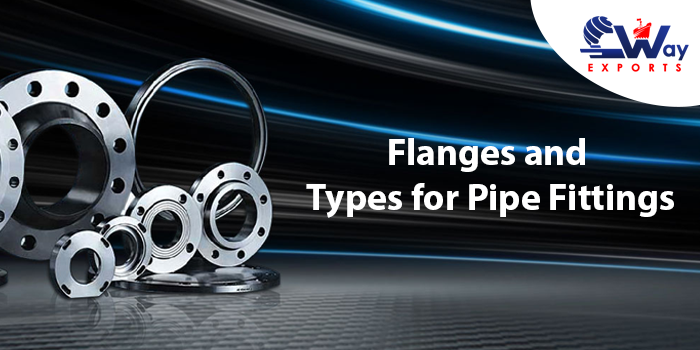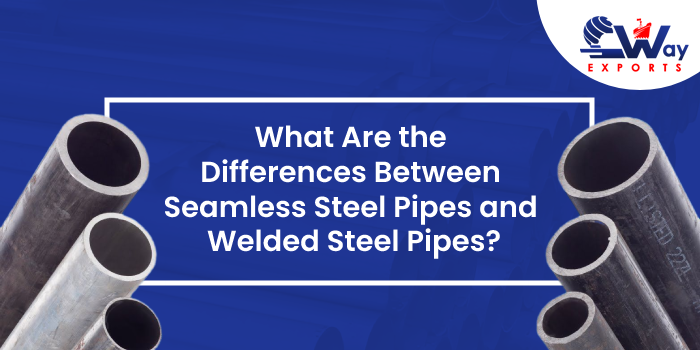5 Factors to Consider Before Choosing Right Flange Type for Your Piping Project
Choosing an ideal flange for the piping project is key for operational reliability while optimizing the pricing and service life. Though a flange design is chosen based on the specific application in a piping system, it is only the first of many other key factors that must be taken into account while picking an ideal flange for your piping system.

5 Factors You Must Know to Choose Right Flange Type for Your Piping Project:
Flange size, materials manufacturing methods, face types and classifications are the other five key factors in addition to the flange design we have discussed in our previous blog here. If you are looking to order a piping flange for your industrial application it is important to have knowledge about these 5 key factors to choose the right piping flange:
1. Face Type:
A flange face is the shape of the area where the gaskets are placed and the flanges are tightened to enable a seal. The strength and robustness of the seal is a factor of the flange face making it an important characteristic of the flange design that plays a key role in both the performance and service life of the flange. Different face types exist today and each with its own advantage; the most common ones are as follows:
⇒ Flat Face: Used in low pressure and temperature applications like water piping systems and pump suctions.
⇒ Raised Face: Enables a stronger seal compared to a flat face. Suitable for both high and low temperatures and pressures.
⇒ Ring Joint Face: Creates a robust metal-to-metal seal and hence is suitable for applications that involve high pressures (>600#) and high temperatures (>800 F°).
⇒ Tongue & Groove: These self-aligning flanges have narrow sealing surfaces and can act as reservoirs. These are leveraged for applications that high-pressure environments that need the strictest sealing capabilities (flammable and explosive materials).
⇒ Male & Female: Provides accurate placement and better sealing capabilities. Preferred in applications where bending crack risk is very high, commonly used in heat exchanges.
2. Materials:
Flanges can be produced by a wide variety of materials. Each material has its own set of properties and hence the flange material is picked based on temperature, pressure and corrosion rate that flanges had to encounter and withstand in the piping project. Here are 6 common types of materials used in flange manufacturing and their properties:
⇒ Stainless Steel: High tensile strength temperature and pressure tolerance and durability are common characteristics of stainless steel that makes the most widely used material for flanges in gas, chemicals, and power generation, water, food & beverage industries.
⇒ Carbon Steel: Carbon steel offers superior strength and toughness, excellent chemical and cracking resistance ad high fatigue strength. This makes them an ideal material of choice for flanges in a wide variety of industrial applications.
⇒ Super Alloys: Superalloy flanges are commonly used in applications that involve the harshest of environments. High heat and acid corrosion resistance and extreme durability are common characteristics of supper allot flanges. Defence, aerospace, oil gas industries commonly employ the super alloy flange s their unique properties.
⇒ Aluminum: With a high strength to weight ratio Aluminium offers excellent corrosion resistance while being lightweight. Oil, gas, chemical and petroleum industries utilize aluminium flanges for these unique properties.
⇒ Copper: Copper flanges are highly conductive, non-magnetic and can withstand high temperatures with ease. They are commonly used in medical tables, electrical components, automobiles, plumbing and other applications.
⇒ Titanium: Extremely durable and lightweight, titanium is also heat resistant making it a perfect choice of material in the aircraft industry.
3. Manufacturing Methods:
Different methods used to manufacture flanges impart different properties to the flanges. Casting and forging are two common methods that are used to manufacture flanges today. Both these methods have their own advantages and disadvantages which are taken into account while choosing the right flange for your application.
⇒ Casting: Molten metal is poured into a flange mould and as the metal is hardened after cooling, it is machined to the required dimensions and surface finish.
Flanges manufactured by casting has a simple machining process that delivers high precision, lower production costs and no upper limit on size. However, they are prone to internal defects, corrosion and are not suitable for high-pressure applications.
⇒ Forging: The material is subjected to thermal and mechanical energy to ensure a specific shape which is then machined to the right specifications.
Forging ensures compact internal structure with a tight grain structure that lends higher strength durability. Porosity, shrinkage, cavities are limited in forging making them stronger and more resistant to wear and tear Forged flanges than the casted flange. However, forging limits the range of sizes and increases the manufacturing costs.
4. Sizes:
The sizes and other key physical dimensions of flanges are extremely important to ensure optimum fit and usability of a flange on the piping system. Measurement of the physical dimensions must be made in relation with pipes, gasket sized and flange interface and some of the standard dimensions of pipe fitting flanges include:
- Nominal bore size
- Outside diameter
- Inner diameter
- Bolt circle diameter
- Thickness
- Pipe size
5. Classification:
Material, faces type, size and manufacturing methods factor in to decide the performance of the flange across various pressures and temperatures. However simple classifications are introduced to make it even easier to judge the performance of the flange across various temperature and pressure conditions. Some of the common classifications of flanges are 150#, 300#, 600#, 900#, 1500#, and 2500#, where # is used interchangeably with “class” or “lb” to indicate the pressure rating of the flange. It must be noted that that number doesn’t indicate the exact pressure rating. It indicates a pressure class – the higher the number better the ability to stand the pressure at a higher temperature.
C-Way Exports – Best Flange Suppliers in India
There is a virtually endless list of factors that must be considered before choosing the right flange for a specific application. However flange design, face type. The material, manufacturing method, sizes and classifications give a solid background to help you make the right decision. If you have already zeroed in on the flange type and are looking for the best flange suppliers in India, then our experts at C-way Exports are here to help. As one of the leading industrial equipment suppliers in India, we specialize in different types of flange that are mentioned above. Today C-way Exports provides all kinds of flanges in required shapes, sizes and custom specifications for clients across 62 countries and can perfectly cater to your flange requirements too. If you are looking for the best flange suppliers in India, you can contact us here: https://cwayexports.com/





